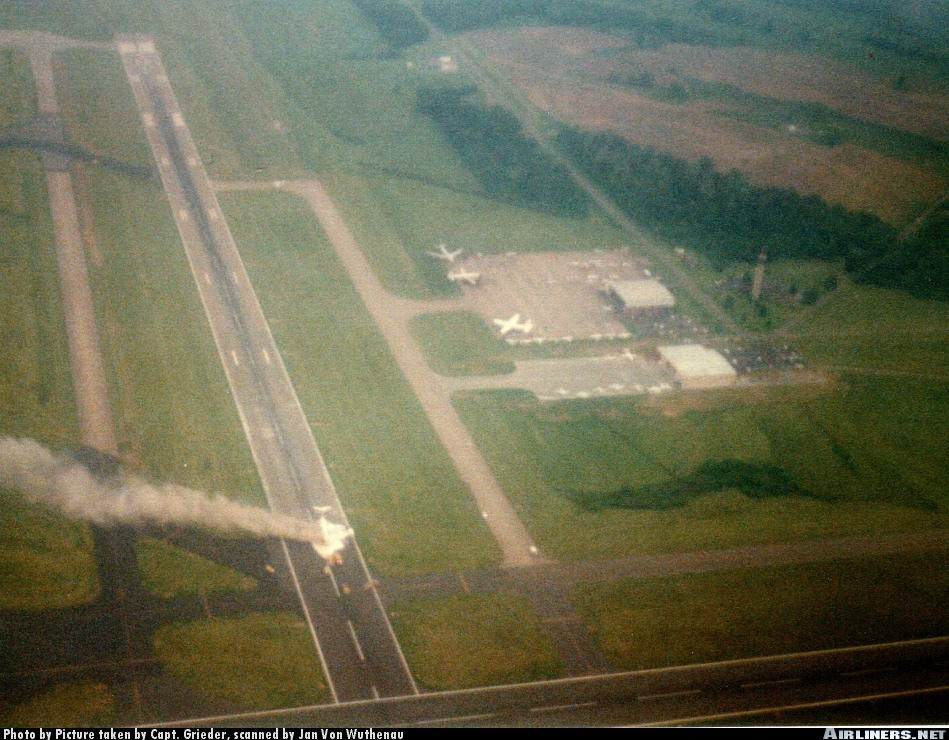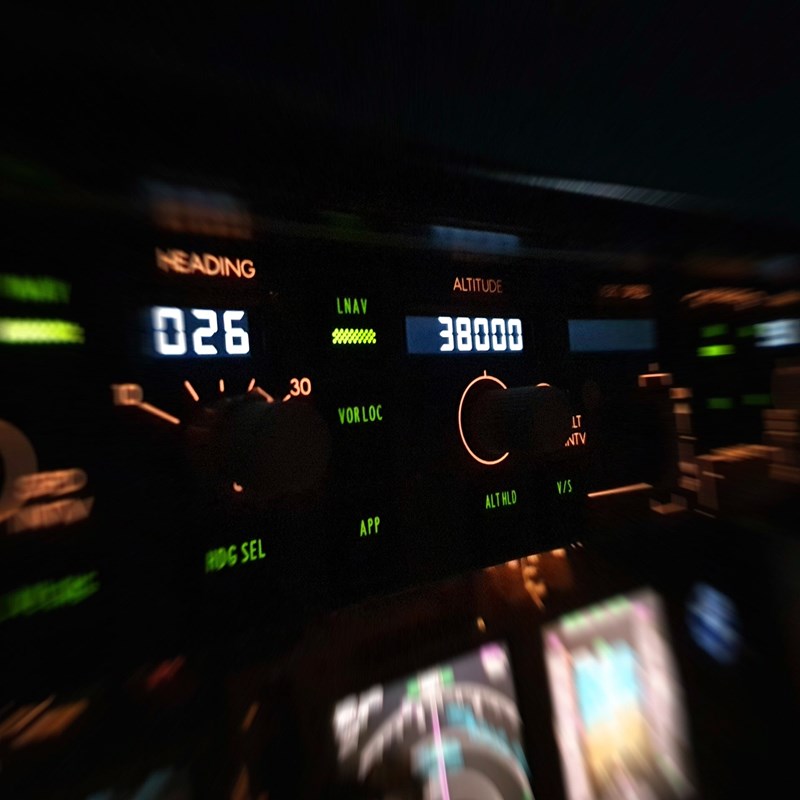2 June 1983 - Air Canada 797
Air Canada Flight 797 was a scheduled trans-border flight that flew on a Dallas/Fort Worth-Toronto-Montreal route. On June 2, 1983, the aircraft developed an in-flight fire behind the washroom that spread between the outer skin and the inner décor panels, filling the plane with noxious, toxic smoke. The spreading fire also burned through crucial electrical cables that knocked out most of the instrumentation in the cockpit, forcing the plane to divert to an alternate landing field. Ninety seconds after the plane landed and the doors were opened, enough oxygen was available for the fire to flashover, killing the 23 remaining passengers left on board.
At 16:20 CDT (21:20 UTC) on June 2, 1983, the Air Canada aircraft registered C-FTLU took off from Dallas-Fort Worth International Airport; it was to make a stop at Toronto International Airport (now Toronto Pearson International Airport) in Mississauga, Ontario, ultimately bound for Dorval Airport (now Montréal-Pierre Elliott Trudeau International Airport) in Dorval, Quebec.
Donald Cameron was the captain and Claude Ouimet served as first officer. While flying over Louisville, Kentucky, an in-flight fire began in or around the rear lavatory of the McDonnell Douglas DC-9-32. The pilots heard a popping sound around 18:51 CDT, during dinner service, and discovered that the lavatory's circuit breakers had tripped. It was not uncommon, however, for an airplane's lavatory circuits to pop occasionally, a problem often preceded by the common aftermath of passengers completing their in-flight meals, so Cameron waited around eight minutes to give the tripped circuits time to cool down before attempting to reactivate them at 18:59 CDT.
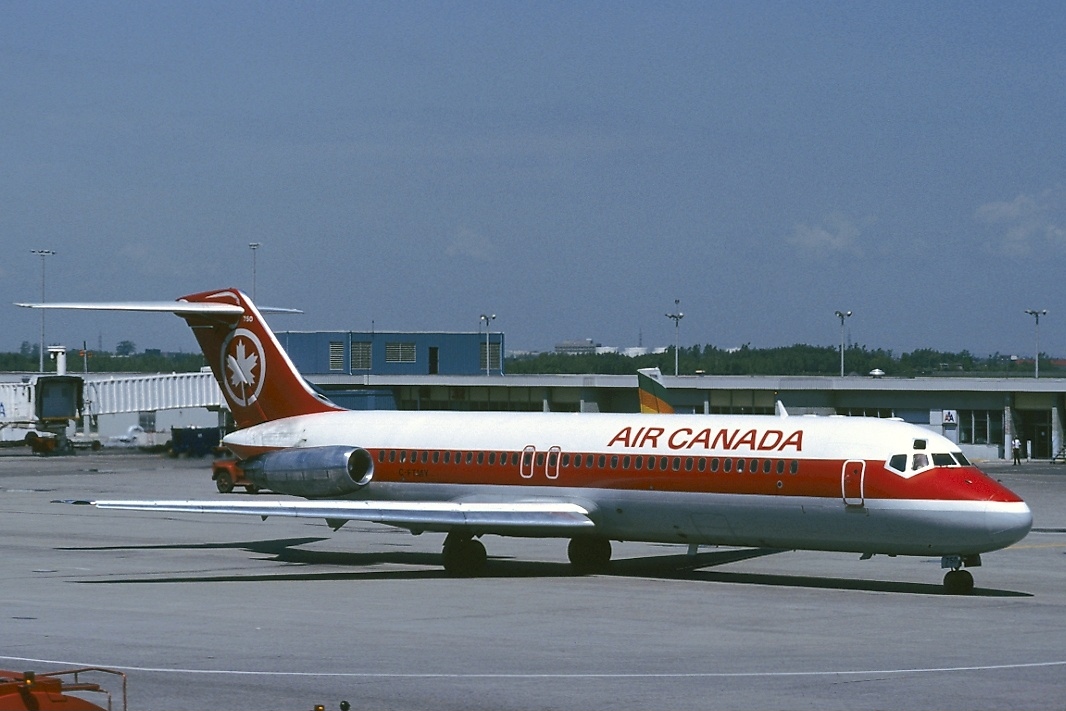
On the cockpit voice recorder, National Transportation Safety Board (NTSB) investigators heard eight sounds of electrical arcing—likely inaudible to the crew—preceding the initial circuit breaker trips; though a number of wires in the lavatory section were later found with insulation stripped away, investigators were unable to determine whether this insulation damage was the cause of the fire or was caused by the fire. Despite being unable to find the specific shorting wire that caused the arcing sounds and breaker trips nor the exact cause or origin point of the fire, investigators determined that the fire itself was likely an electrical fire that burned behind the wall of the lavatory, with the plane's outer skin serving as a conduit for smoke to seep in through the seams in the interior panels and collect near the apex of the cabin.
A strong, noxious odor coming from the rear of the plane was first reported to the cabin crew around 19:00 CDT. Flight attendant Judi Davidson traced the odor to the lavatory. She attempted to look into the lavatory but was forced back by a thick grey smoke rapidly filling the small room; she then ordered the third ranking crew member to find Sergio Benetti, the chief cabin crew officer, and ask him to investigate. As Benetti sprayed the interior of the affected lavatory with a CO2 extinguisher, Davidson reported the fire to the captain while flight attendant Laura Kayama began urging the passengers on the sparsely-populated flight to come away from the front and rear of the plane and sit closer together in a compact group around the over-wing exits. At no time did any of the cabin crew mention to either Cameron or Ouimet that they had yet to see flames, and the one person who had managed to get a good look at the scene—Benetti—had not reported seeing anything resembling the traditional causes of airline fires in pre-smoking-ban days: flames from a trash bin fire or the paper towel dispenser, both of which were commonly set ablaze by passengers who would smoke in the lavatories on long flights. However, around 19:04 CDT, Benetti reported that he thought the fire was probably out because of how much he had doused the lavatory and that "it's gonna be easing up soon". This came less than a minute after Ouimet had attempted to investigate the fire but had been driven back by the thick smoke, causing him to strongly recommend landing the plane.
Just three minutes later, however, at 19:07 CDT, passengers began smelling smoke in the cabin again, and just two minutes after that—19:09 CDT—the "Master Breaker" alarm went off in the cockpit, and electrical systems throughout the plane began to fail, including power for the elevator trim system. This made controlling the plane's descent extremely difficult and required a great amount of physical exertion from the pilot and first officer. In addition, the PA system failed, leaving the flight attendants unable to communicate efficiently with the passengers; nevertheless, attendants were able to instruct passengers sitting in the exit rows on how to open the doors, a practice that was not standard on commercial airline flights at the time.
At 19:20 CDT, Cameron and Ouimet made an extremely difficult emergency landing at the Greater Cincinnati Airport, located in Boone County, Kentucky across the Ohio River from Cincinnati, Ohio. During the evacuation, the overwing aircraft doors were opened, causing an influx of air that fueled the fire. Ouimet escaped through the co-pilot's emergency window shortly after the plane landed, but Cameron, who had exerted so much force to keep the plane under control, was unable to move. Firefighters doused Cameron in firefighting foam through Ouimet's window, shocking him back to consciousness; Cameron was then able to open the pilot's emergency escape window and drop to the ground, where he was dragged to safety by Ouimet. Less than 90 seconds after touchdown, the interior of the plane ignited, killing 23 of the 41 passengers. The passengers trapped inside the plane died from smoke inhalation and a flash fire. Of the surviving passengers, three received serious injuries, thirteen received minor injuries, and two were uninjured. None of the five crew members sustained any injuries. The eighteen surviving passengers and five crew members were able to leave the aircraft before the interior burst into flames; Captain Cameron was the last person to leave the plane before the flash fire consumed the plane. Many of the passengers suffered smoke inhalation and minor injuries. Dianne Fadley, a survivor, stated that "it was almost like" passengers who escaped found "nothing wrong", with a typical injury being a sprained ankle or a broken arm. You made it and you were completely fine, or you didn't make it.
Twenty-one Canadians and two Americans died. Many of the bodies were burned beyond recognition. Almost all of the victims were in the forward half of the aircraft between the wings and the cockpit. Some bodies were in the aisles, and some bodies were still in the seats. Two victims were in the back of the aircraft, even though the passengers were moved forward after the fire had been detected; the disoriented passengers moved beyond the overwing exits and succumbed. The blood samples from bodies revealed high levels of cyanide, fluoride, and carbon monoxide, chemicals produced by the burning plane.
Seventy-six maintenance reports had been filed in the plane's logs in the previous year, and four years earlier the plane had suffered an explosive decompression in the rear bulkhead that required rebuilding the tail section and replacing or splicing most of the wiring and hydraulic lines in the back of the plane. Investigators were unable to find signs of arcing in any of the wire splices from the repairs four years earlier, though much of the wiring in the rear of the plane was severely damaged or destroyed by the fire itself.
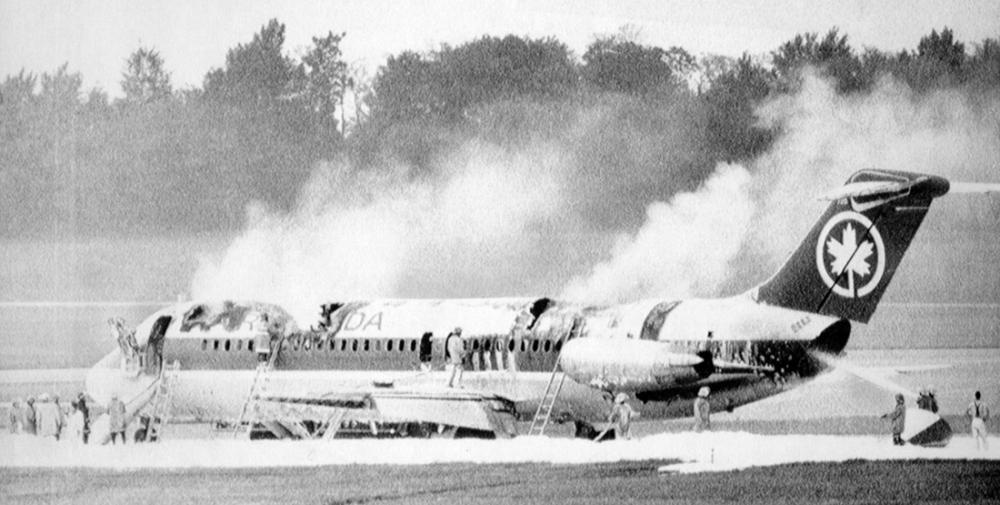
Download the full NTSB report
Transcript of the Cockpit Voice Recorder (CVR)
Legenda CAM = Cockpit Area Mike voice or sound source
RDO = Radio Communications
-1 = Voice identified as Captain
-2 = Voice identified as First Officer
-3 = Voice identified as male flight attendant
-4 = Voice identified as female flight attendant
-5 = Voice identified as male passenger
CTR = Indianapolis Center
* = Unintelligible word
# = non pertinent word
( ) = Questionable text
--- = pause
Times are in Central Standard Time
| 18.48:12 | CAM | [Sound similar to arcing] |
| 18.48:15 | CAM | [Sound similar to arcing] |
| 18.51:03 | CAM | [Two sounds similar to arcing] |
| 18.51:04 | CAM-1 | How is your sea food, nice? |
| CAM | [Sounds similar to arcing and snapping] | |
| CAM-2 | It's good | |
| CAM-1 | * steak nice? | |
| 18.51:09 | CAM-2 | Different, a little bit dry but okay |
| 18.51:14 | CAM | [Sounds similar to arcing and snapping] |
| CAM-2 | (What was that?) | |
| CAM-1 | # | |
| 18.51:19 | CAM-2 | It's right here, I see it |
| CAM-1 | Yeah | |
| CAM-1 | DC bus | |
| CAM-2 | Which one is that? | |
| CAM-1 | DC bus the, ah, left toilet, left toilet flushing | |
| 18.51:27 | CAM-1 | (I) better try it again, eh, push 'em in |
| CAM-2 | Push it in one more time, I guess | |
| 18.51:41 | CAM | [Sound of arcing] |
| CAM-2 | What! | |
| 18.51:42 | CAM | [Sound of arcing and snap] |
| CAM-1 | That's it | |
| 18.51:43 | CAM | [Sound of arcing and snap] |
| CAM-1 | Won't take it | |
| CAM-2 | No | |
| CAM-1 | See anything else? | |
| CAM-1 | (There's nothing) on the panel | |
| CAM-1 | Ha | |
| 18.52:08 | CAM-1 | Like a machine gun |
| CAM-2 | Yeah, zap, zap, zap | |
| CAM-1 | * put it in the book, there | |
| CAM-2 | Log it | |
| 18.52:26 | CAM-1 | Now I want to log it, eh |
| 18.53:16 | CAM-1 | Somebody must have pushed a rag down the old toilet or something eh? |
| 18.53:21 | CAM-1 | Jammed it, and it overheated |
| 18.53:25 | CAM-2 | Is it flushing you pushed? |
| CAM-1 | It's flushing yeah | |
| CAM-2 | (Motor) * | |
| 18.53:30 | CAM-1 | Toilet flushing, three breakers banged |
| 18.53:35 | CTR | Air Canada seven ninety seven, contact Indianapolis on one three three point zero five |
| 18.53:40 | RDO-2 | Air Canada seven nine seven, so long |
| 18.53:41 | CTR | So long |
| 18.53:53 | RDO-1 | Indianapolis Center, this is Air Canada seven nine seven maintaining three three zero direct Louisville on course |
| 18.53:59 | CTR | Air Canada seven ninety seven Indianapolis Center roger |
| 18.54:18 | CAM-1 | Don't see the ground too often, today eh? |
| CAM-1 | No, a lot of, a lotta cloud eh, the whole * * * the whole area | |
| RDO-? | * * * | |
| 18.56:56 | CAM-2 | Yeah, that feels good |
| 18.57:09 | CAM-1 | What the # does this mean |
| 18.57:12 | CAM-1 | (Reg a bail) |
| CAM-2 | I don't know | |
| CAM-2 | Regional examiner, regional * regional | |
| 18.57:36 | CAM-1 | We may be, I don't know, A.J. would be a three letter code if it was an airport, eh |
| CAM-2 | I don't know, it might be in the, ah, charts | |
| CAM-1 | Regional --- here's another regional A.J. | |
| CAM-1 | (Well it's) | |
| 18.58:16 | CAM-2 | That (one) is lettered D.G. * |
| CAM-1 | Oh I see, oh yeah, yeah * | |
| 18.58:27 | CAM-1 | Alternate, ah, must be out alternate here |
| CAM-1 | Ah who gives a # | |
| 18.58:43 | CAM-1 | Nothing to do with us |
| CAM | [Sound similar to cockpit door] | |
| CAM-3 | Yeah thank you sir | |
| 18.59:02 | CAM-? | UWX |
| 18.59:30 | CAM-1 | Twenty nine U, W, and X twenty nine, those are grid references |
| 18.59:37 | CAM-2 | Twenty nine, yeah |
| 18.59:42 | CAM-1 | Twenty nine UWX three --- the left toilet flushing |
| CAM-2 | Left | |
| 18.59:47 | CAM-1 | Yeah aft left toilet flush, and they wouldn't accept a reset |
| 18.59:58 | CAM | [Sound of first attempt to reset and sound similar to arcing] |
| 18.59:59 | CAM | [Sound of second attempt to reset and sound similar to arcing] |
| 19.00:00 | CAM | [Sound of third attempt to reset and sound similar to arcing] |
| CAM-1 | Pops as I push it | |
| CAM-2 | Yeah, right | |
| CAM-1 | Yeah | |
| 19.00;51 | CAM | [Sound of cough] |
| 19.01:12 | CAM-2 | Zero two seven set for ya Don |
| 19.01:33 | CAM-1 | Better --- have dinner here |
| 19.01:42 | CAM | [Sound of a chime] |
| CAM-3 | Yes | |
| 19.01:49 | CAM-1 | Sergio could I try for mine now please |
| CAM-3 | Sure | |
| CAM-1 | Thank you very much | |
| 19.01:59 | CAM-1 | Do you want any of that fruit or should we give it to the girls -- as far as I'm concerned |
| CAM-2 | No | |
| CAM-1 | I don't want it | |
| 19.02:13 | CAM-1 | There you go |
| CAM-2 | Thanks | |
| 19.02:15 | CAM-1 | You're in a left turn here to pick up oh two seven |
| CAM-2 | So okay twenty seven | |
| CAM-1 | Louisville to Rosewood | |
| 19.02:28 | CAM-1 | The next chart yeah that's it |
| CAM-2 | Yeah | |
| 19.02:34 | CAM-1 | We're just over Louisville here |
| CAM-2 | [Sound of whistling] | |
| CAM-2 | Louisville --- Rosewood, okay | |
| 19.02:40 | CAM-4 | Excuse me, there's a fire in the washroom at the back, they're just oh # went back to go to put it out |
| CAM-1 | Oh yeah | |
| CAM-4 | They're still, well they're just gonna go back now | |
| CAM-2 | Want me to go there | |
| 19.02:50 | CAM-1 | Yeah go |
| CAM-2 | * the brakers # up | |
| CAM-1 | Leave my, leave my, leave my dinner in the thing there for a minute | |
| CAM-4 | Okay | |
| CAM-5 | (Can I buy you a drink cause there's something going on, drink or a shot) | |
| CAM-? | Ah, wouldn't say that | |
| 19.03:06 | CAM-5 | Yeah okay |
| CAM-? | Still there huh? | |
| CAM-5 | Yeah | |
| 19.03:10 | CAM-2 | Got the, ah, breakers pulled |
| CAM-1 | It's the motor | |
| 19.03:15 | CAM-4 | Pardon me |
| CAM-2 | You got all the breakers pulled out? | |
| CAM-1 | The breakers are all pulled yeah | |
| 19.03:21 | CAM-4 | (* * make 'em all seat?) |
| CTR | Republic two eighty eight Indianapolis, Memphis one three three point eight five three three eight five, goodbye | |
| 19.03:31 | CAM-4 | Captain is it okay to move everybody up as far forward as possible |
| 77L | * * seven seven lima (Knoxville) * * two none zero -- | |
| CTR | Seven seven lima (Knoxville) roger | |
| 19.03:54 | CTR | Delta sixteen twenty six continue descent to flight level two four zero, Indianapolis |
| 19.04:00 | CTR | Center one two eight five five on two four zero at twenty eight fifty five so long |
| 19.04:07 | CAM-2 | Okay I eh, you don't have to do it now, I can't go back now, it's too heavy, I think we'd better go down |
| RDO-? | (Cleared) ah okay | |
| 19.04:16 | CAM-3 | I got all the passengers seated up front, you don't have to worry I think it's gonna be easing up |
| 19.04:23 | CAM-2 | Okay, its starting to clear now |
| CAM-1 | Okay | |
| 19.04:25 | CAM-1 | Well I want --- hold on then |
| CAM-3 | (Mike) I just can't go back it too | |
| CAM-2 | I will go back if that's appears better, okay | |
| CAM-1 | Yeah that's okay | |
| CAM-? | That's okay, yeah | |
| CAM-2 | So --- | |
| CAM-1 | Take the, take the smoke mask | |
| CAM-2 | You have control | |
| CAM-1 | Take the goggles | |
| 19.04:36 | CAM-1 | I'll leave the mask on |
| CAM-2 | Okay | |
| 19.04:46 | CAM-1 | Okay go back whenever you can but don't get yourself incapacitated |
| CAM-2 | No problem, no problem | |
| CAM-1 | Okay | |
| 19.05:15 | 268G | Indianapolis good evening Citation two eight six golf, three one oh |
| 19.05:18 | CTR | Citation two eight six gold Indianapolis |
| 19.05:35 | CAM | [Electric pulse appears on tape radio channels] |
| 19.05:36 | CAM-4 | Captain, your first officer wanted me to tell you that Sergio has put a big discharge of CO2 in the washroom, it seems to be subsiding, all right |
| 268G | Okay we're proceeding direct Pocket City | |
| CTR | Affirmative sir, direct Pocket City direct Evensville | |
| 268G | Six gold | |
| 19.05:48 | B747 | Center Poca seven four seven level four three zero |
| CTR | Poca seven four seven Indianapolis roger | |
| RDO-1 | Memphis Center this is Air Canada seven nine seven | |
| 19.06:09 | CTR | Canada seven ninety seven Indianapolis Center, go ahead |
| 19.06:12 | RDO-1 | Yeah, we've got an electrical problem here, we may be off communication shortly ah stand by |
| CAM-1 | (Coming along okay) | |
| CAM-3 | Getting mush better, okay | |
| 19.06:42 | CAM-3 | I was able to discharge half of the CO2 inside the washroom even though I could not see the source but its definitely inside the lavatory |
| 19.06:50 | CAM-1 | Yeah, it's from the toilet, it's from the toilet |
| 19.06:52 | CAM-3 | CO2 it was almost half a bottle and it now almost cleared |
| 19.06:54 | CAM-1 | Okay, thank you |
| 19.06:55 | CAM-3 | Okay, good luck |
| CAM | [Sound similar to cockpit door] | |
| CAM-2 | Okay, you got it * | |
| CAM-1 | Yeah | |
| CAM-1 | Okay | |
| 19.07:11 | CAM-2 | I don't like what's happening, I think we better go down, okay? |
| CAM-1 | Okay | |
| 19.07:14 | CAM-2 | Okay, I'll be back there in a minute |
| 19.07:28 | P362 | Hello Center, Piedmont three sixty two we're level at flight level three three zero |
| 19.07:32 | CTR | Three sixty two Indianapolis Center roger |
| 19.07:35 | P362 | We'll take direct Holston Mountain if you can do that |
| 19.07:41 | Recorder goes off |
